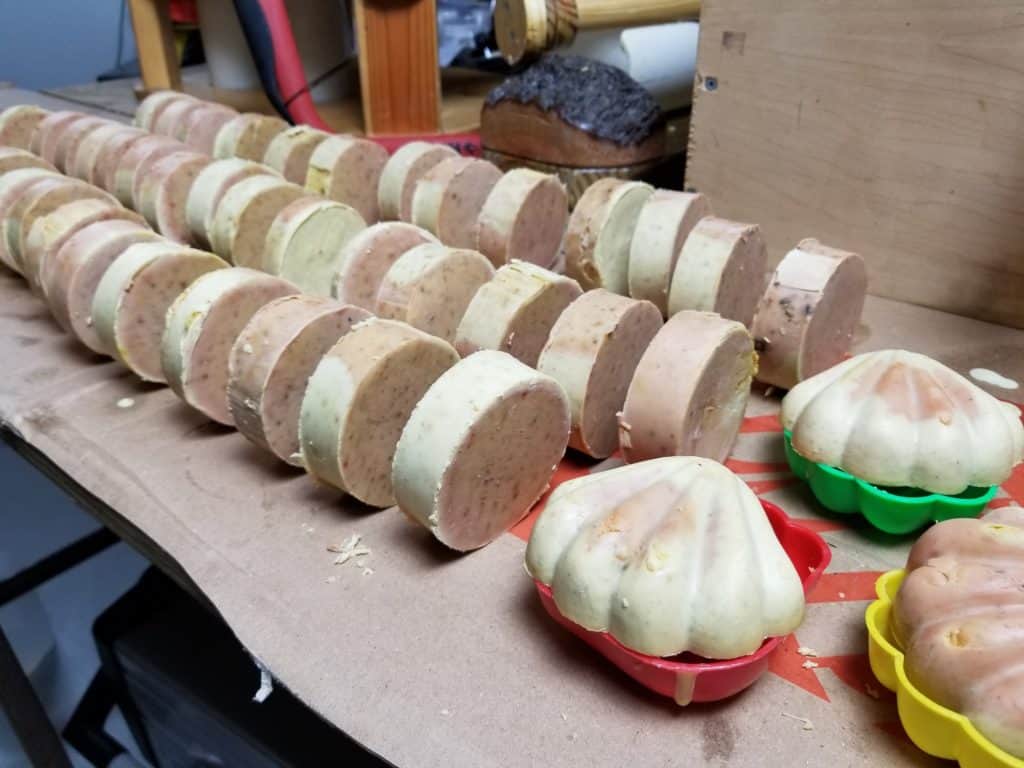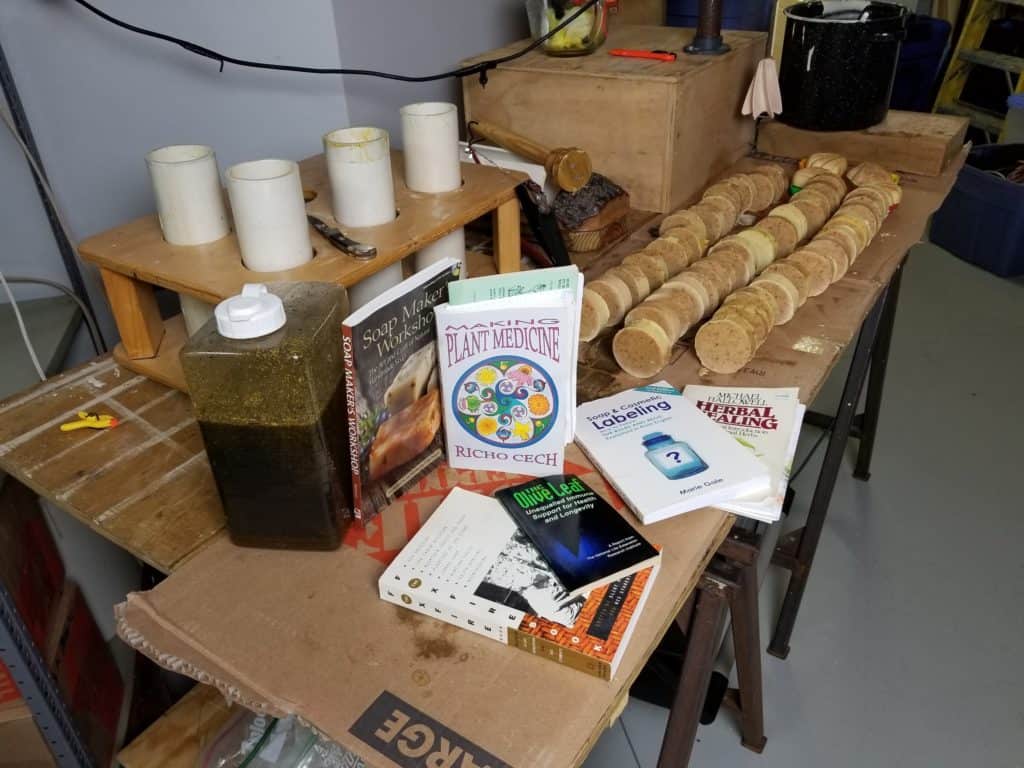The #Saponification has started at tracing.
Making #OliveOil Soap with Mom today. She really can’t charge enough for all of the healthy ingredients that go in her soap. She’s truly an herbalist and long time soap master.
Step 1: Macerate Seven skin healthy herbs in olive oil for eight weeks.
Step 2: Heat Macerated olive oil to 150 degrees.
Step 3: Melt in 7 beneficial oils, bees wax and butters.
Step 4: * Put on PPE safety equipment – BOTH lye and lye / oil mixture are caustic to the skin for the first 3 days. Handle carefully and keep an open bottle of Vinegar near by to neutralize any splatters on skin – Wear Long Sleeves, Nitril Gloves, Safety Glasses – Use ventilation, especially while mixing lye into water… Slowly stir lye into distilled water. Exothermic Reaction takes it to 170F degrees (it can burn skin, both from the heat and the caustic lye).
Step 5: After BOTH the Olive Oil and the Lye Water cool to the EXACT same temperature of 100 degrees. (You will probably need to add heat to olive oil to keep it at 100, until Lye Water catches up ((or down to 100)) – At the exact same temperature of 100, SLOWLY stir lye water into oil. Then stir at a brisk pace until it thickens and starts tracing – could take a while! My drill press and a paint mixing paddle helps!
Step 6: Add 4 ounces of pure essential oils PLUS a handful of ground peppermint leaves – for health and fragrance.
Step 7: Stir in thoroughly and the pour into molds.
Step 8: De-mold in 1 to 2 days, let cure for 3 weeks before using – for safety reasons…

The olive oil that goes into #MomsSoap AKA #CastleSoap gets macerated in Seven Herbs for Eight Weeks. Being an herbalist. Mom knows just the right herbs for skin health and beauty. After eight weeks soaking in the olive oil. Then about 20 other specialty oils, butters, beeswax and essential oils get added during #saponification
https://en.wikipedia.org/wiki/Saponification
According to Wikipedia: Saponification is a process that involves conversion of fat or oil into soap and alcohol by the action of heat in the presence of aqueous alkali (e.g. NaOH). Soaps are salts of fatty acids and fatty acids are monocarboxylic acids that have long carbon chains (at least 10) e.g. sodium palmitate.
Vegetable oils and animal fats are the traditional materials that are saponified. These greasy materials, triesters called triglycerides, are mixtures derived from diverse fatty acids. Triglycerides can be converted to soap in either a one- or a two-step process. In the traditional one-step process, the triglyceride is treated with a strong base (e.g. lye), which cleaves the ester bond, releasing fatty acid salts (soaps) and glycerol. This process is also the main industrial method for producing glycerol. In some soap-making, the glycerol is left in the soap. If necessary, soaps may be precipitated by salting it out with sodium chloride.

